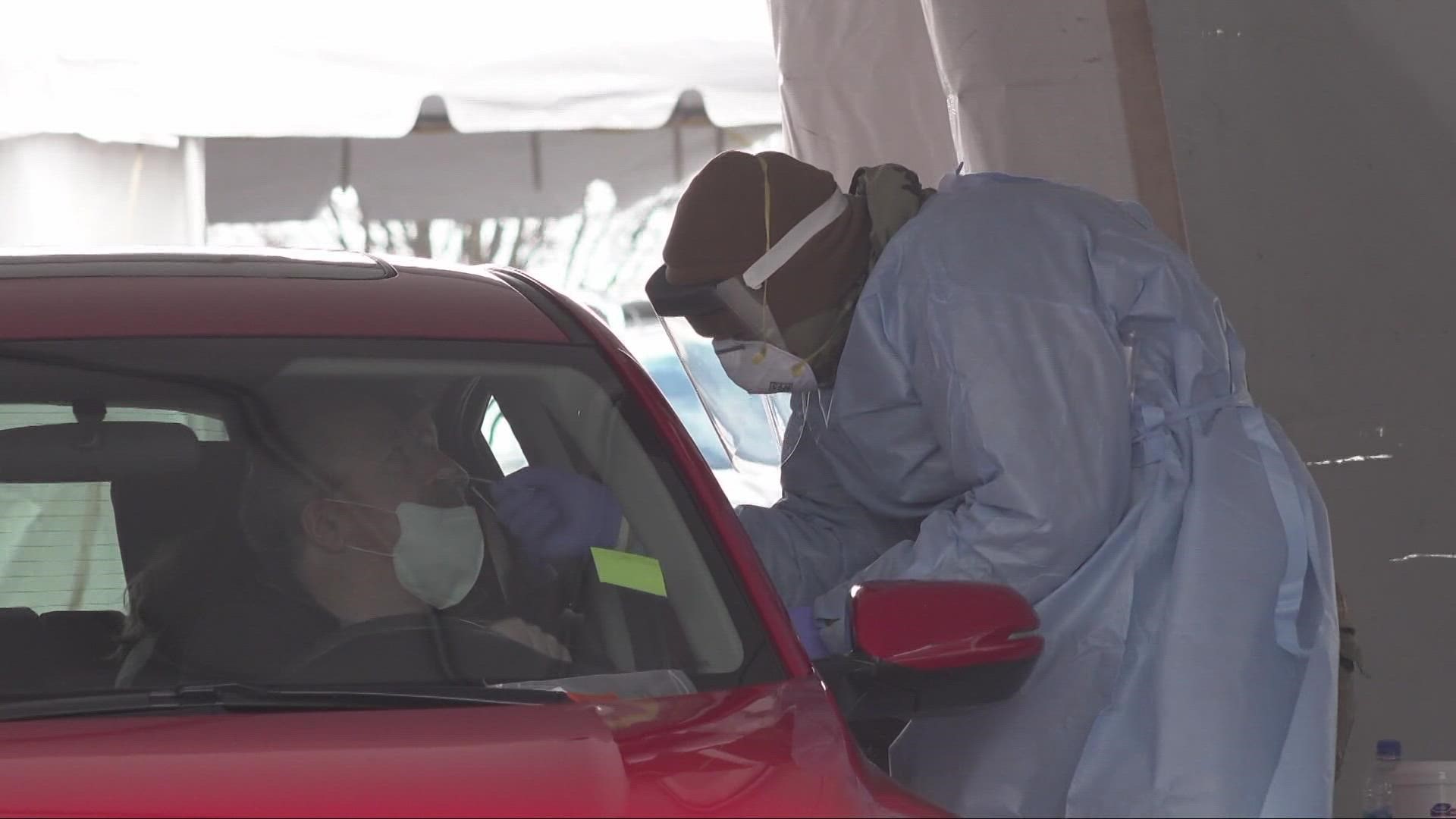CLEVELAND — While the UK is dealing with record levels of COVID-19 infections, the Omicron BA.2 subvariant isn’t scaring local health experts.
“BA.2 is here in the states. It's here in Northeast Ohio. We sequence positive samples every week,” said Cleveland Clinic head of Microbiology Dr. Dan Rhoads.
Despite seeing an increased proportion of cases of the BA.2 subvariant, locally we aren’t seeing an increase in total cases.
We’ve often looked across the pond as a bellwether, but there are other variables now playing in our favor.
In the United Kingdom, one in every 13 people is sick. Scientists there are also watching a new, mutant Omicron variant known as XE, which the World Health Organization says is 10 percent more contagious than BA.2.
“There's a lot of variables, but it's hard to put your finger on one,” that makes us different, said Dr. Rhoads, mentioning widespread immunity, how long that immunity may last, even the weather.
“I think it would be overly optimistic to say what's happening in the UK now with the surge in cases is not going to happen here, he said. “But at the same time, I don't think it would be surprising if we had a different experience because there's a lot of changes and variability throughout this course of the pandemic.”
“What we think is protecting us is because of the two waves are so close together, that enough people were infected by Omicron, that that were, we're kind of protected,” said University Hospitals Rainbow Babies’ and Children’s Dr. Amy Edwards. “Now how long that protection will last, we don't know. And if people start to become non-immune, and the BA.2 variant is still around, we do expect to start to see a steady, slow increase.”
Dr. Edwards noted a slight uptick in the positivity rate in recent days, but with Northeast Ohio cases already at 72 percent BA.2, she doesn’t expect to see a huge difference over the next few weeks.
“I think that we're okay for now,” she said, adding warmer weather could also offer some protection if SARS COV-2 proves to be as seasonal as other coronaviruses and influenza.
“It's possible maybe that the summer will protect us. And that it won't really become an issue until the fall,” Dr. Edwards added. “We don't really know. It's just kind of something we're watching.”
An FDA panel of outside experts met today to look at the COVID vaccine strategy for the rest of the year. The point was discussion, not decisions. But the panel said to meet demand this fall, clinical trials on updated vaccines need to be underway by next month.
Edwards says a multivalent vaccine like Moderna is looking at, could provide broad protection against many variants.
“[It is] basically a booster shot that has so many different versions of the spike protein in it that presumably it would create immunity that would be very broad against any variant. Something like that may really turn the tide,” she said. “And make these future waves basically non-existent.”
Until that’s available, staying ready for anything means getting boosted when you’re eligible, and hanging onto masks and tests for when we could need them again.
“There's a point at which it's all about risk calculation, you know. And for us right now, the risk is relatively low, especially if you're in outdoor settings,” she said.
“What I would encourage people to do is consider that maybe there's some gray area, maybe everything's not black and white,” said Dr. Rhoads. “Maybe we need to turn up and turn down our behavior over time, depending on what's happening in the community.”
“The same tools that we've used previously, we can use moving forward to try to keep ourselves and our communities as safe as possible,” he said.
Previous Reporting:

